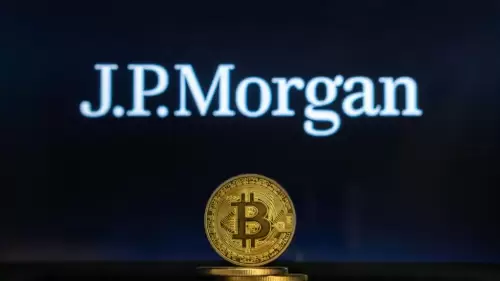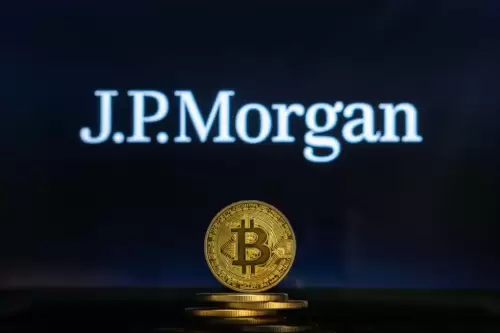 |
|
 |
|
 |
|
 |
|
 |
|
 |
|
 |
|
 |
|
 |
|
 |
|
 |
|
 |
|
 |
|
 |
|
 |
|
Articles d’actualité sur les crypto-monnaies
NFTs Explored: What They Are, How They Work, and Their Potential Real-World Use Cases
May 14, 2025 at 06:15 am

Non-fungible tokens, or NFTs, quickly became one of the most important pillars of the crypto market in just a few years. They became the hottest new trend with massive multi-million dollar art sales, but they have expanded far beyond simple digital art since.
As blockchain technology matures and adoption grows, NFTs could prove to be essential tools for ownership, authentication, and digital commerce across countless industries. Whether it’s buying a house with a deed NFT, verifying your identity online, or trading rare in-game assets, NFTs are set to play an even greater role in the future’s digital economy.
What Is a Non-Fungible Token (NFT)?
Non-fungible tokens are unique digital assets stored on a blockchain, usually Ethereum or Solana. “Non-fungible” simply means that the asset is unique and can’t be directly replaced or exchanged for another asset. For example, a U.S. dollar is fungible because it can be easily replaced for another identical dollar. NFTs, on the other hand, are like original paintings or rare collectibles – such as one-of-one baseball cards – where each item is provably unique.
Even though NFTs have only been around for less than a decade, they have already had a major impact on both blockchain adoption and digital culture in general. To understand how we got here, it’s important to take a look back at where NFTs began.
A Brief History of NFTs
NFTs erupted into the mainstream in 2020 and 2021, but they had been around for many years by that point. Developers played around with tech similar to NFTs all the way back in 2012 and 2013. The first clear predecessor of NFTs, a project called Colored Coins, was launched in 2012. Colored Coins represented denominations of Bitcoin “colored” with a little bit of extra data (called metadata), allowing them to stand for real-world assets.
Bitcoin’s blockchain simply wasn’t built for this kind of utility, so Colored Coins didn’t gain much steam. The first collections of NFTs, as we know them today, were launched in 2017. Larva Labs, a fledgling company, launched CryptoPunks in June of that year. CryptoPunks are a collection of 10,000 unique (non-fungible) pixel art characters stored on the Ethereum blockchain.
Just a few months later, CryptoKitties, a collection of cat NFTs, launched and gained popularity quickly as it allowed users to collect and even breed their digital cats. It became so popular that it congested the Ethereum network, making transactions extraordinarily expensive and slow.
The tremendous success of CryptoPunks and CryptoKitties proved the value of unique, verifiable NFTs. Both collections are still remarkably popular (and expensive), even though the NFT market has fallen a long way from its peak. The two collections inspired other creators to launch over a hundred thousand NFT collections over the years. Many of these NFTs are similar, art-focused projects, but the technology has spread to countless industries including gaming, music, real estate, and sports collectibles.
How Do NFTs Work?
NFTs are powered by blockchain technology to verify ownership and ensure the non-fungibility (or uniqueness) of digital assets. When an NFT is minted, a new record is added to the blockchain, a kind of decentralized, tamper-proof ledger that anyone can view and use.
Each NFT is usually linked to a specific digital file like an image, GIF, video, or audio file using a smart contract. Smart contracts are lines of code that automatically execute when certain predetermined conditions are met. An NFT’s smart contract acts similarly to a house deed and a certificate of authenticity, linking the NFT to the creator and recording every transaction or transfer, ensuring the holder can prove ownership.
NFTs can be minted on many different blockchains, though most live on Ethereum, using the ERC-721 or ERC-1155 token standards (unlike ERC-20 tokens). Other popular blockchains for NFTs include Solana, Avalanche, Polygon, and even Bitcoin.
Are NFTs Profitable Anymore?
The NFT market experienced a massive boom in trading volume in 2020 and 2021, making countless NFT millionaires. However, NFT values crashed along with the rest of the crypto market after the collapse of Terra Luna. Plenty of NFT collections still hold substantial value, but almost every top collection is worth much less than it was during the peak.
Since 2022, NFT trading volume has fallen dramatically, and so has mainstream adoption. This has made it much more difficult to trade NFTs profitably, though it’s still possible. Even at its height, making a profit with NFTs was no easy feat, given their extreme volatility and short lifespans. Trading NFTs has always been incredibly risky due to the inherent volatility and low liquidity, and this likely won’t change soon.
How to Buy
Clause de non-responsabilité:info@kdj.com
Les informations fournies ne constituent pas des conseils commerciaux. kdj.com n’assume aucune responsabilité pour les investissements effectués sur la base des informations fournies dans cet article. Les crypto-monnaies sont très volatiles et il est fortement recommandé d’investir avec prudence après une recherche approfondie!
Si vous pensez que le contenu utilisé sur ce site Web porte atteinte à vos droits d’auteur, veuillez nous contacter immédiatement (info@kdj.com) et nous le supprimerons dans les plus brefs délais.
-

- Le prix du pingou plongeait-il? Transferts de binance et tendances de transfert de jetons
- Jul 30, 2025 at 10:00 pm
- Le token Pengu fait face à la pression des prix au milieu des transferts de binance importants. Un rebond à l'horizon est-il ou la tendance baissière se poursuivra-t-elle? Obtenez les dernières idées!
-

- Navigation d'investissement en crypto: l'exploitation bitcoin et l'essor de l'exploitation de nuages dans la Big Apple
- Jul 30, 2025 at 10:00 pm
- Explorez les tendances de l'investissement cryptographique en mettant l'accent sur le bitcoin et la mine de nuages. Découvrez les plates-formes réglementées, les rendements et l'avenir des revenus de cryptographie accessibles.
-

- MEME Coins, profit et investissement: monter sur la vague de crypto avec style
- Jul 30, 2025 at 09:58 pm
- Les pièces MEME ne sont plus une blague, ce sont des prétendants sérieux sur le marché de la cryptographie. Découvrez des informations sur l'investissement de la pièce MEME, le potentiel de profit et les tendances du marché.
-

- La phase de lancement AR Gamified de Livlive: Augmentez votre réalité!
- Jul 30, 2025 at 09:54 pm
- Plongez dans l'expérience AR gamifiée de Livlive, en lançant avec une prévente le 31 juillet 2025. Explorez comment il mélange le monde réel avec les récompenses numériques et redéfinit l'engagement des utilisateurs.
-

-

- JPMorgan & Coinbase: Accès cryptographique pour les masses?
- Jul 30, 2025 at 09:52 pm
- JPMorgan et Coinbase s'associent pour donner aux millions d'utilisateurs un accès plus facile à Crypto, marquant une étape importante dans l'évolution de la finance numérique. Obtenez le scoop sur ce partenariat qui change la donne!
-

-

-

- Cardano Whales, Remittix et Payments transfrontaliers: une nouvelle vague?
- Jul 30, 2025 at 09:49 pm
- Les baleines Cardano se diversifient dans des jetons axés sur le paiement comme Remittix (RTX) au milieu des intérêts croissants dans les solutions de paiement transfrontalières. Est-ce l'avenir de l'investissement cryptographique?






























































